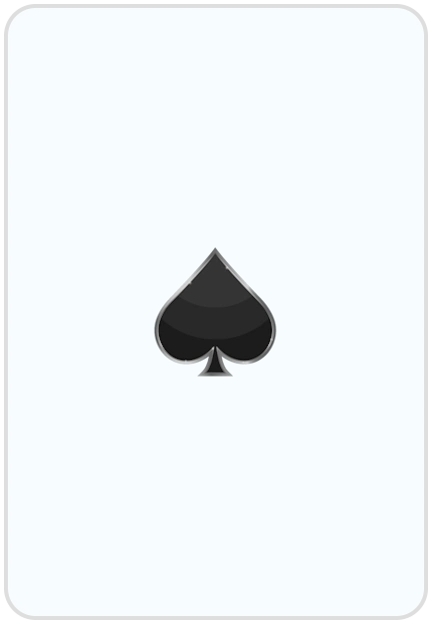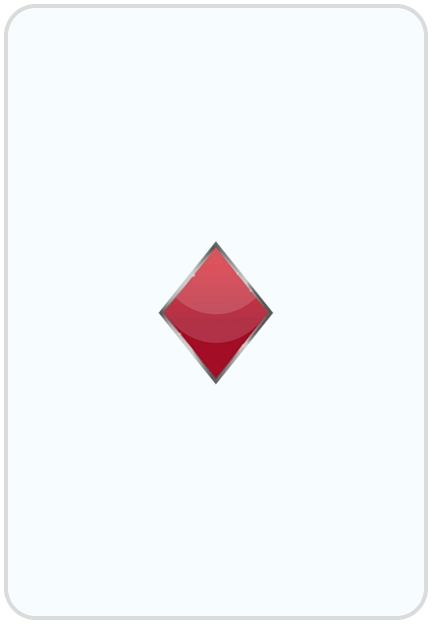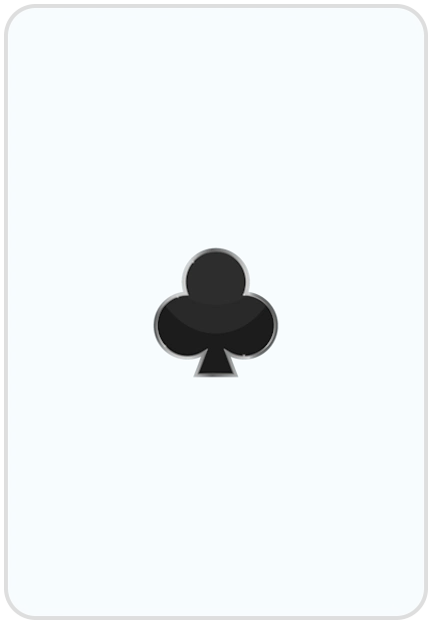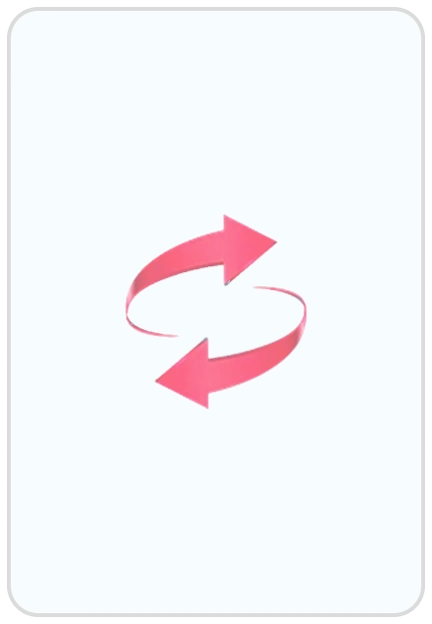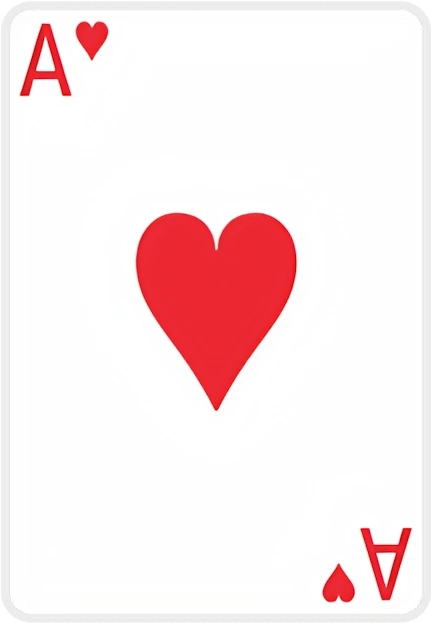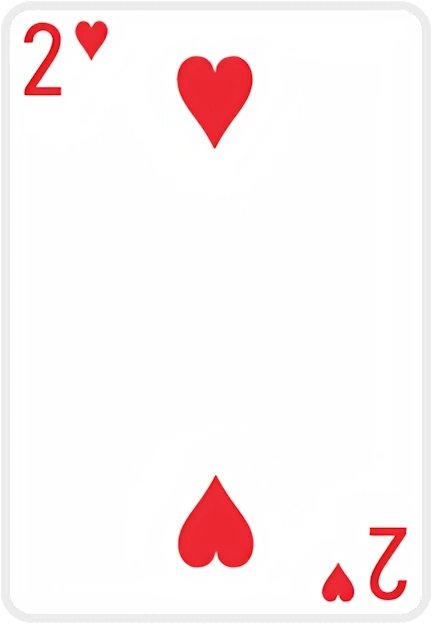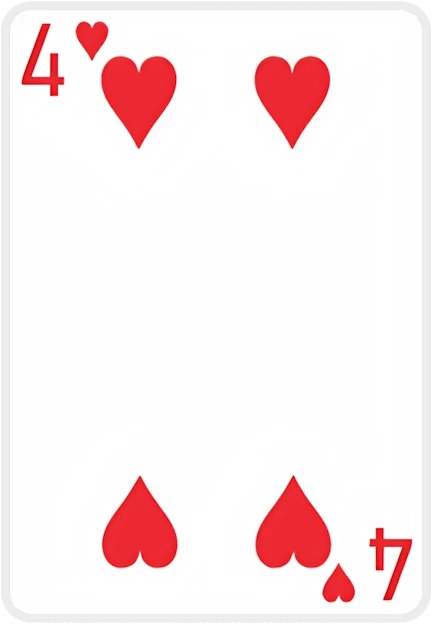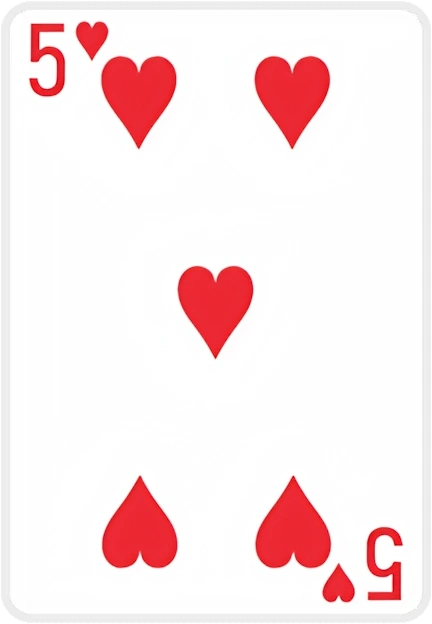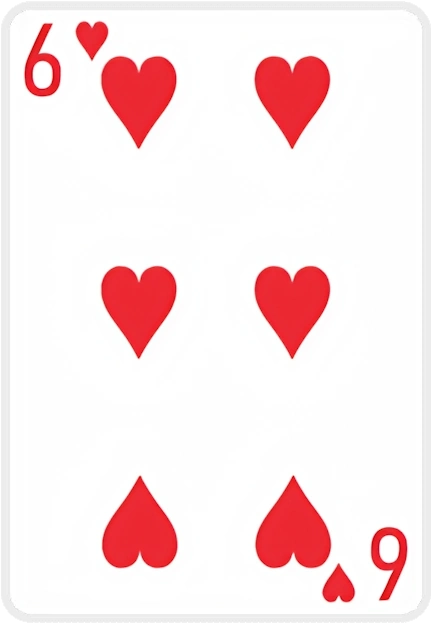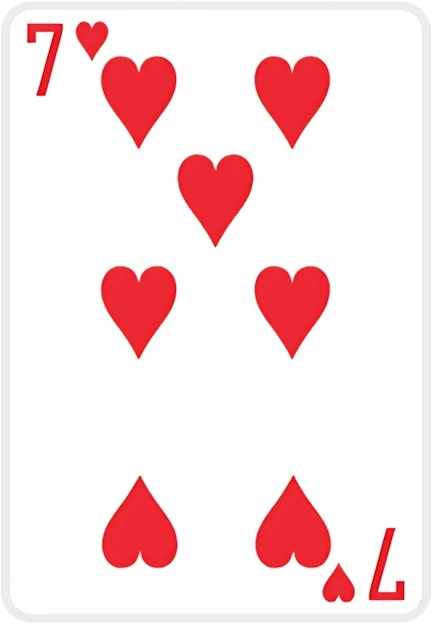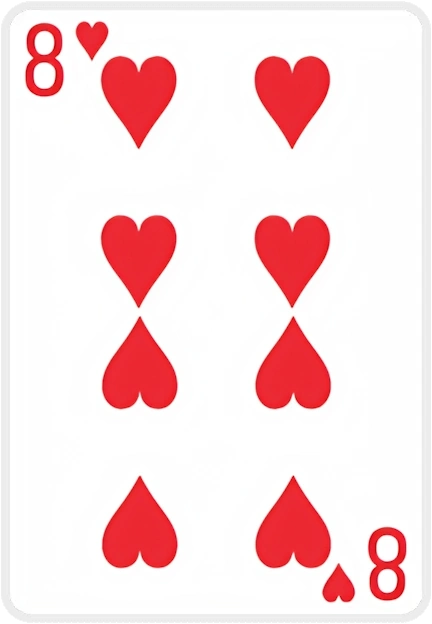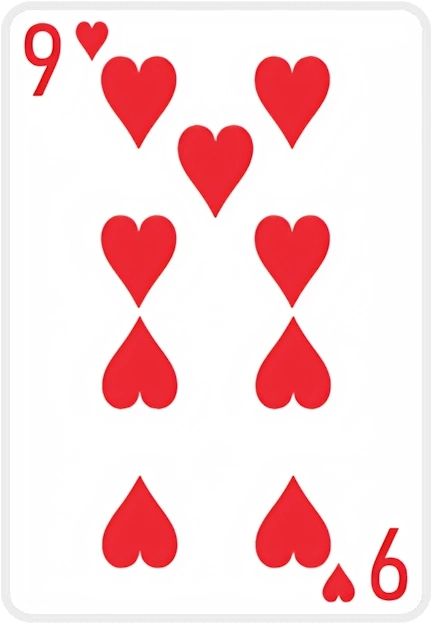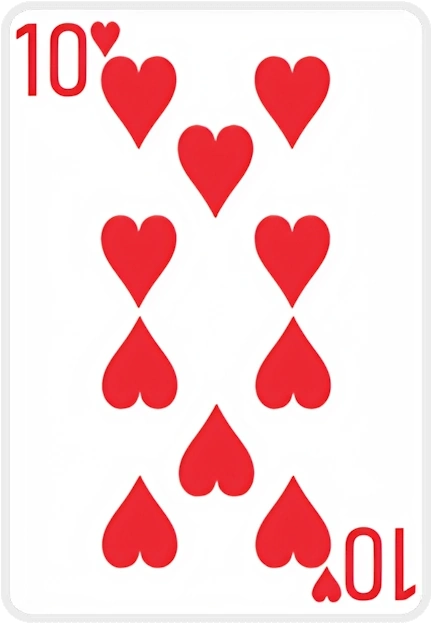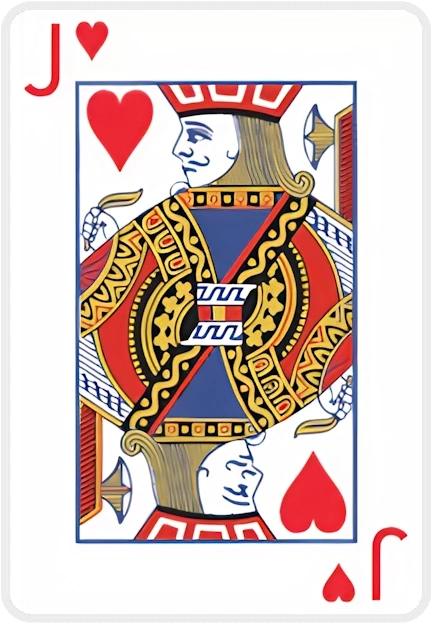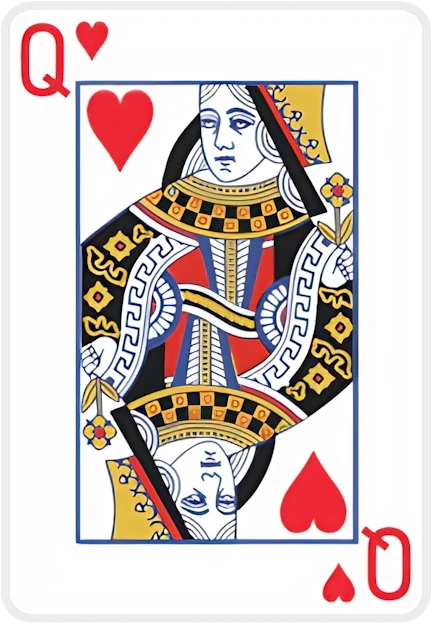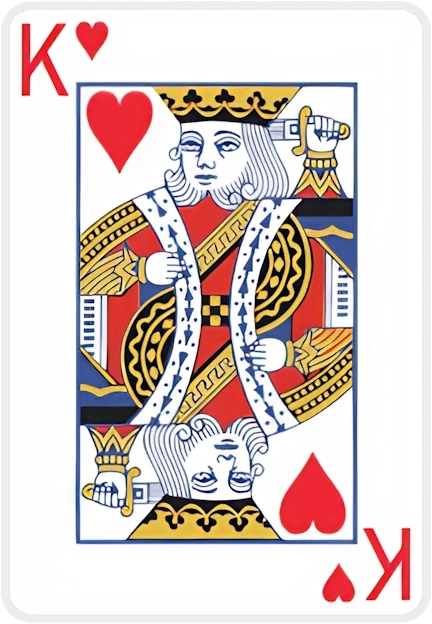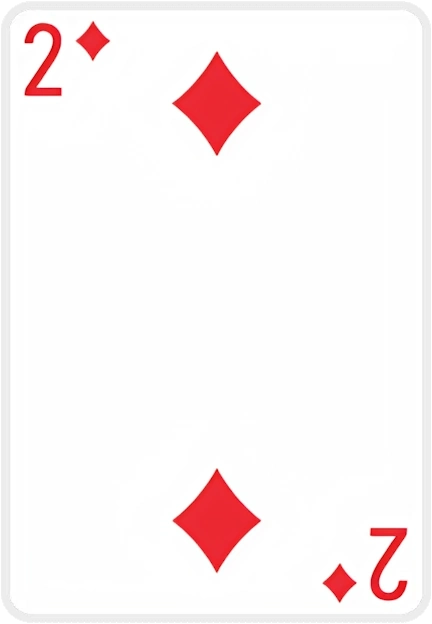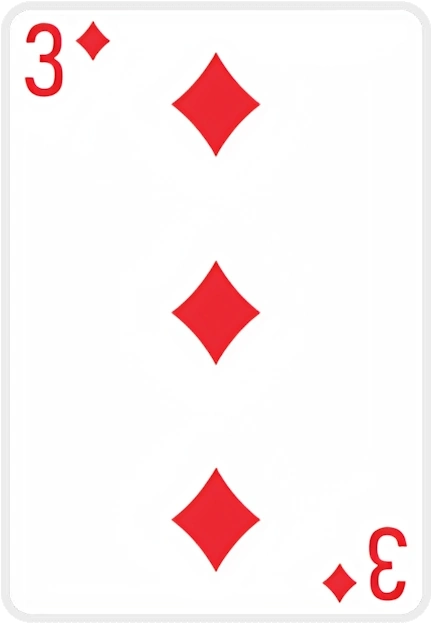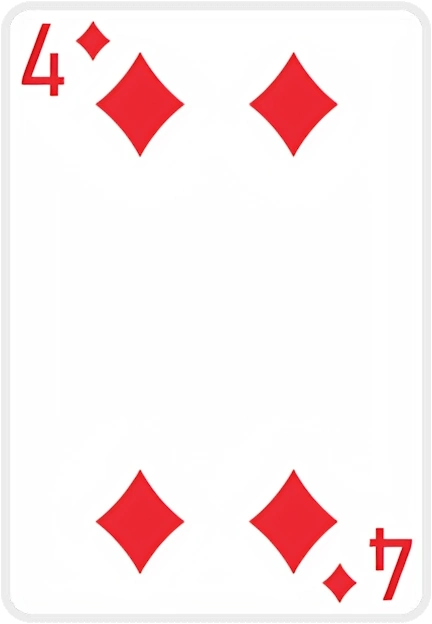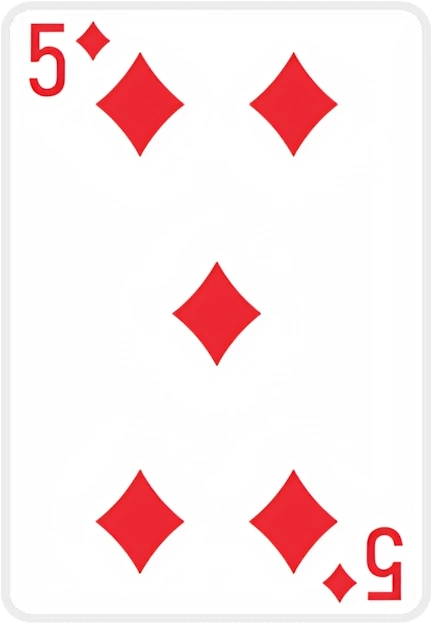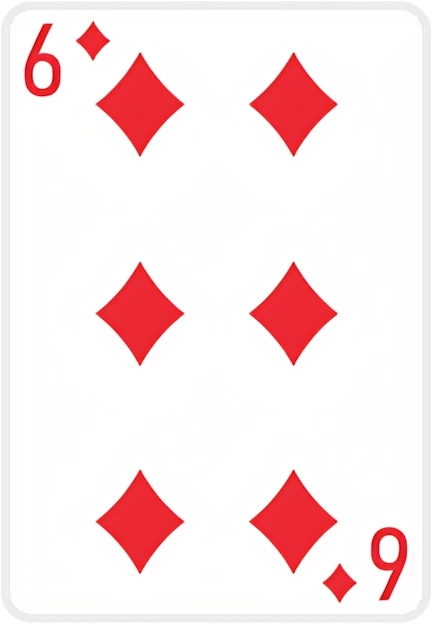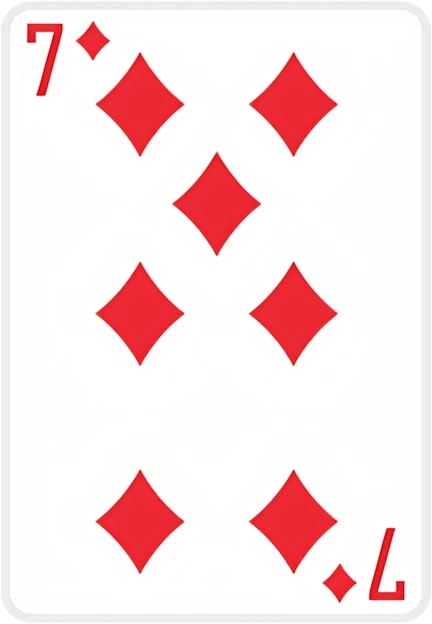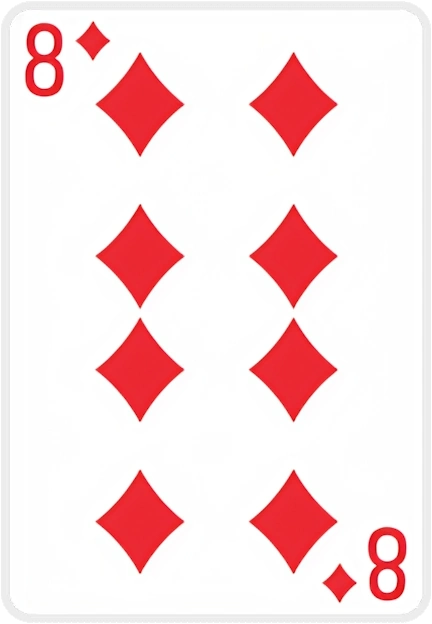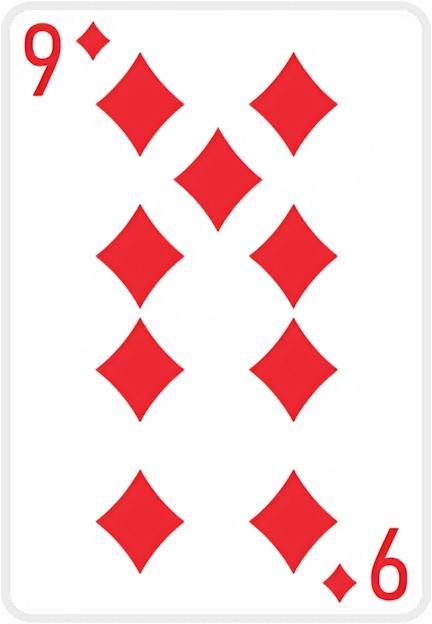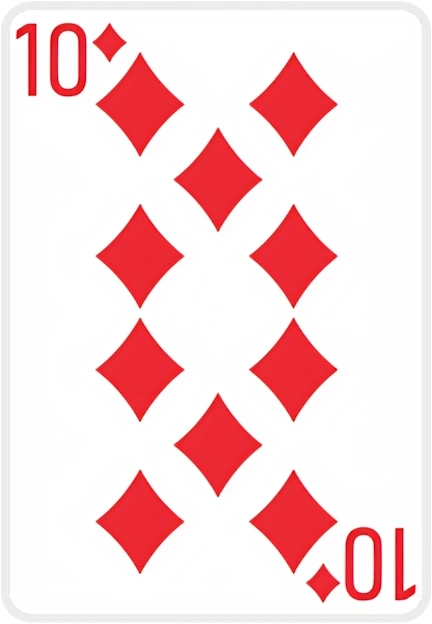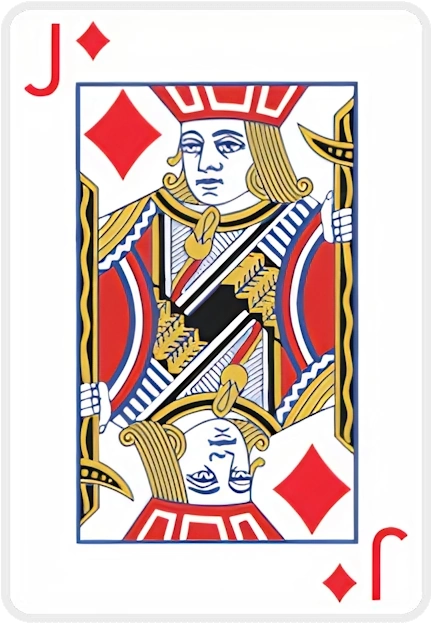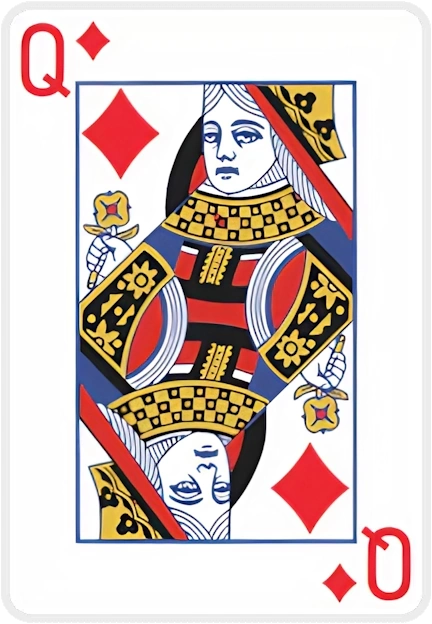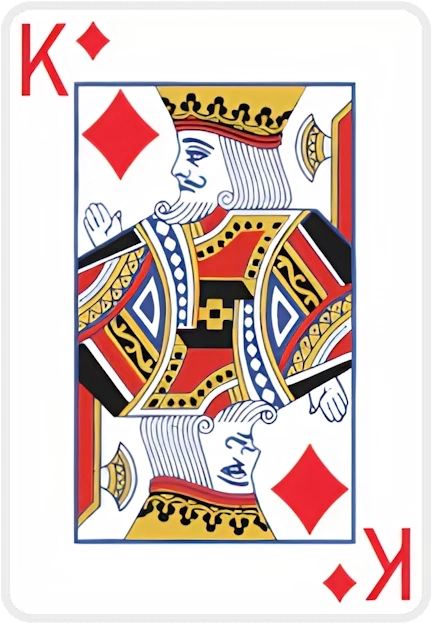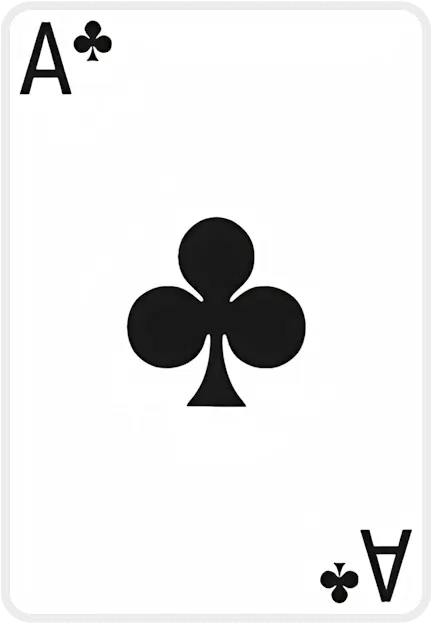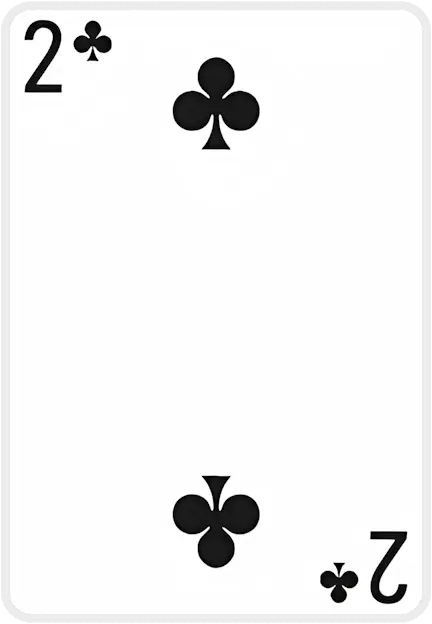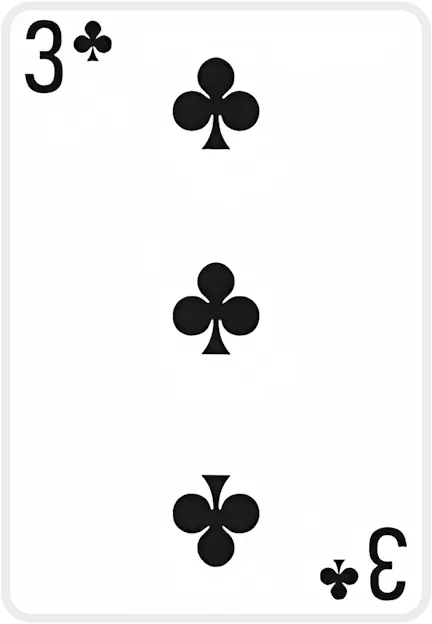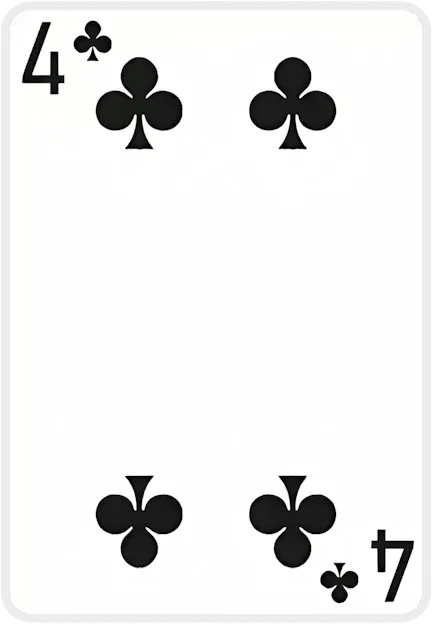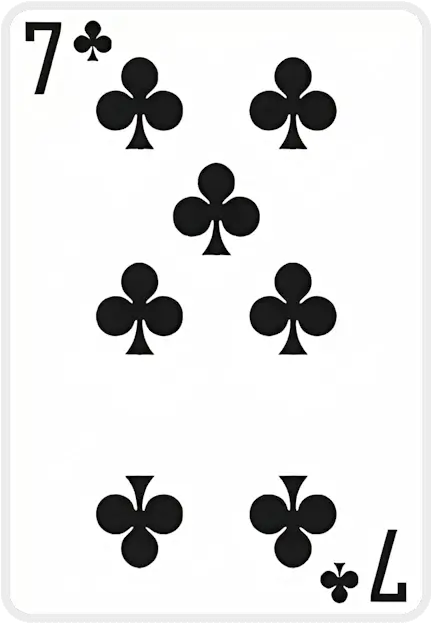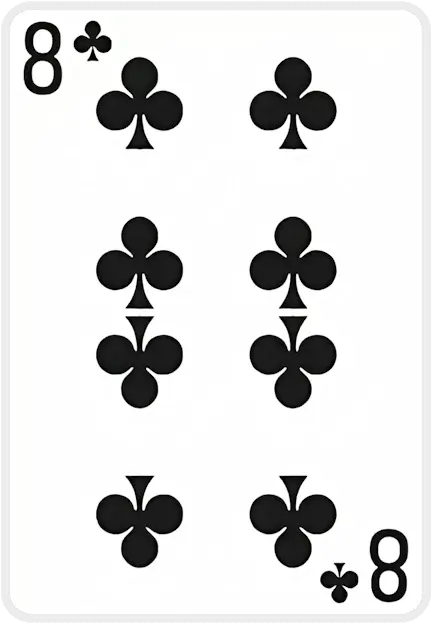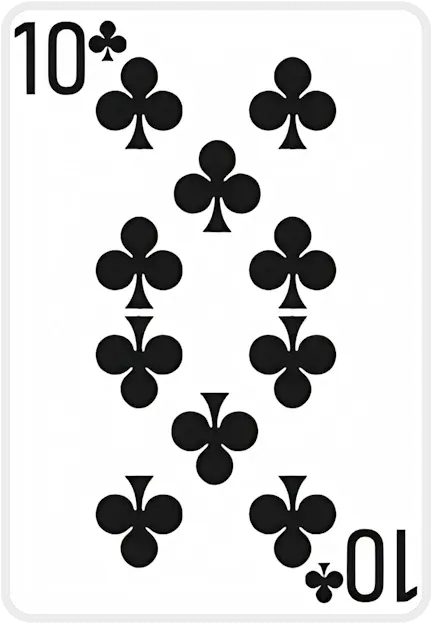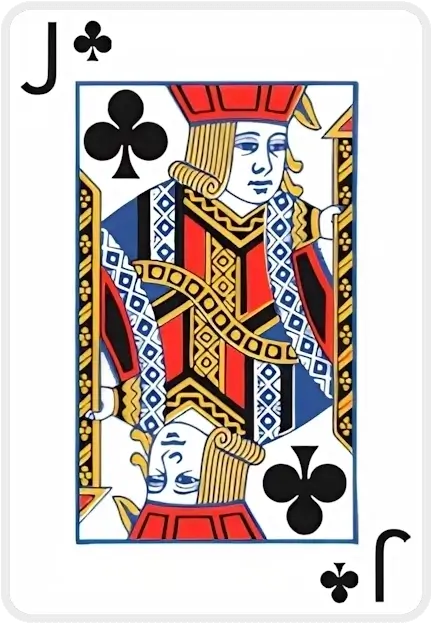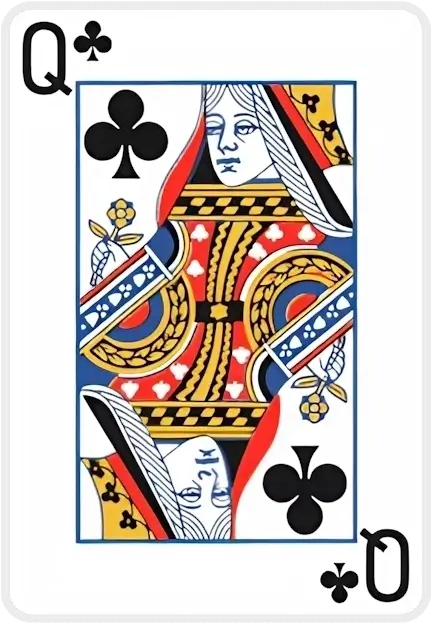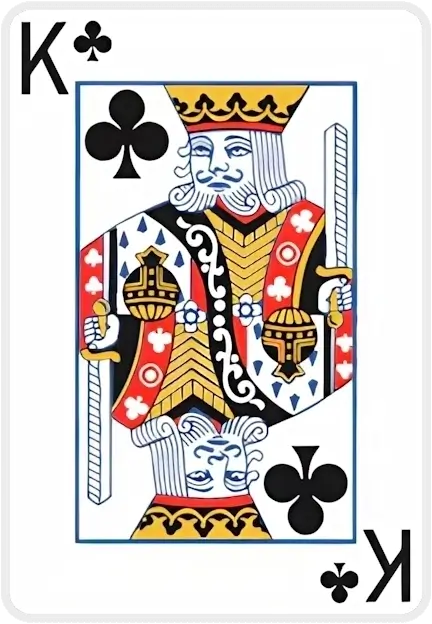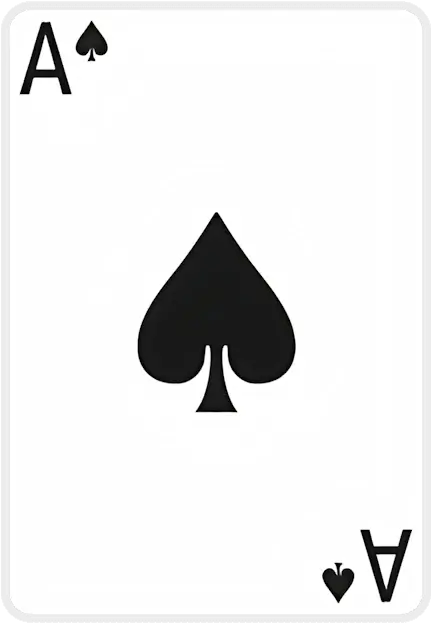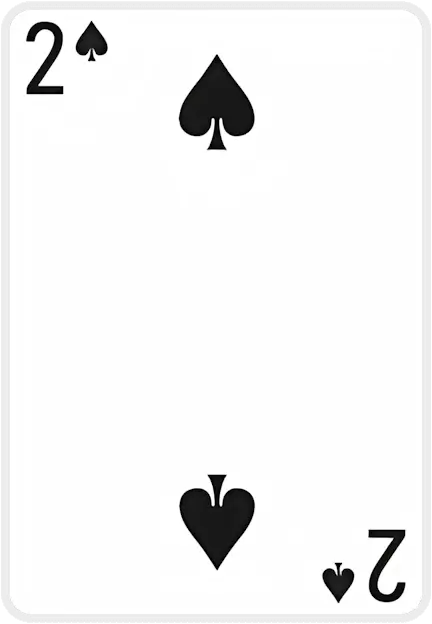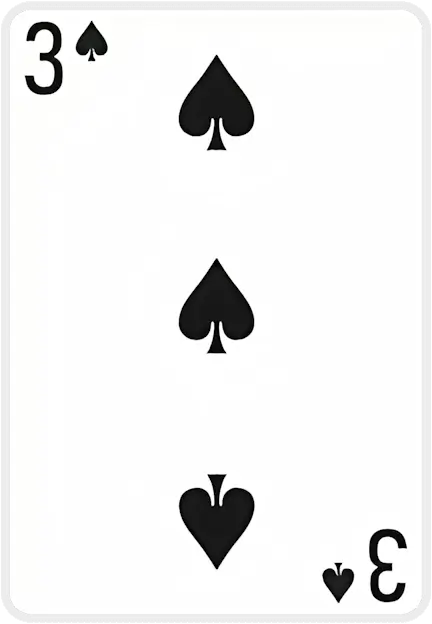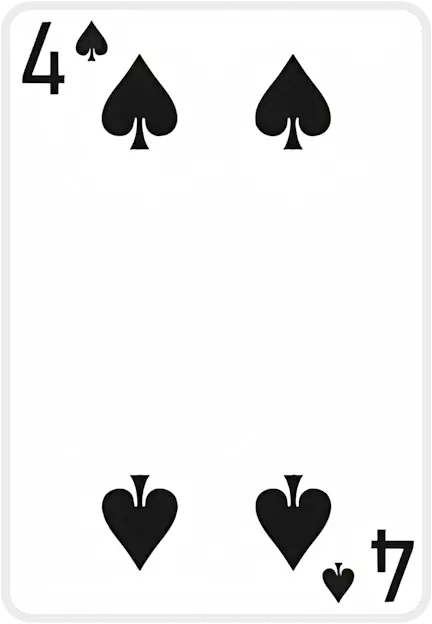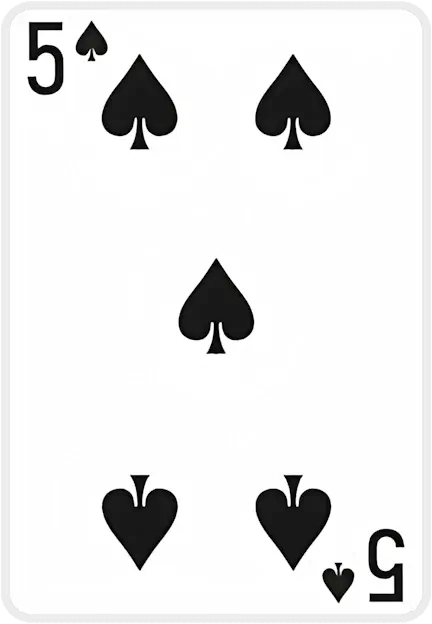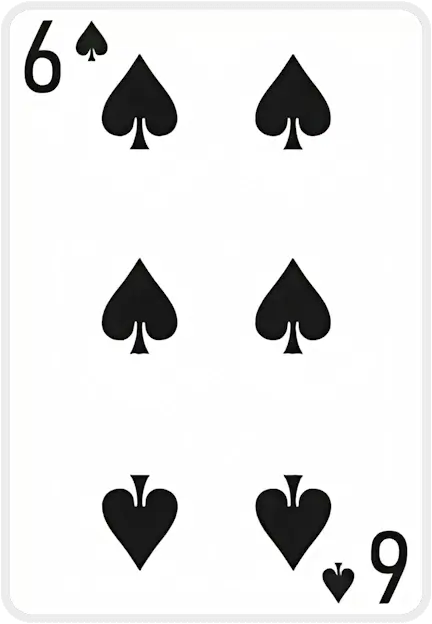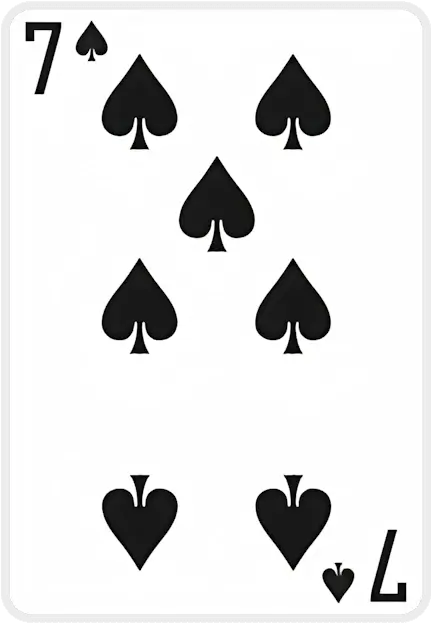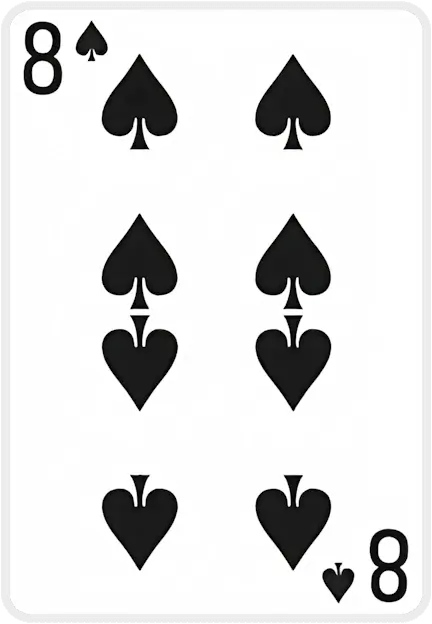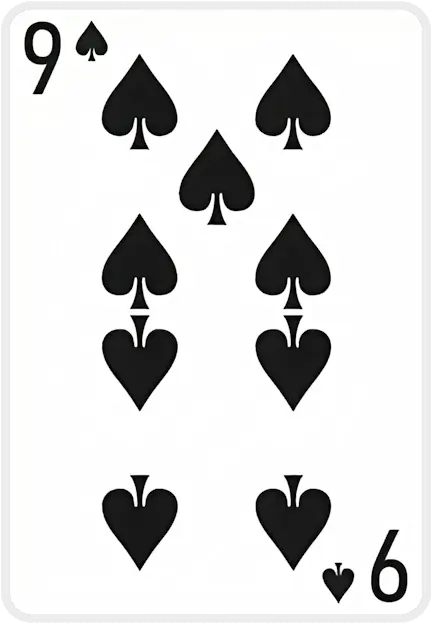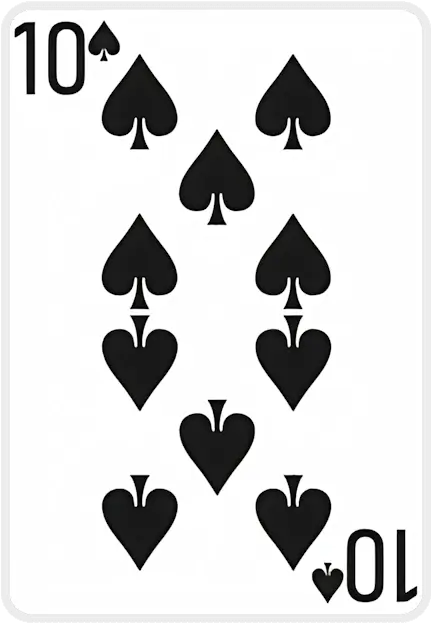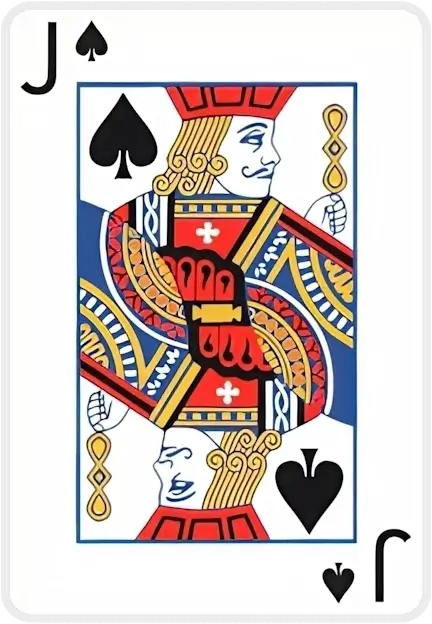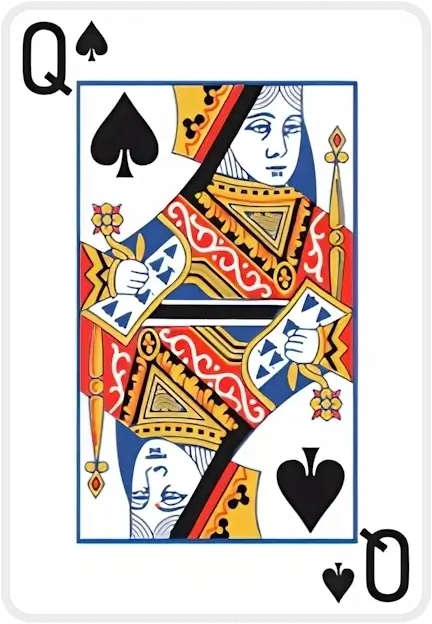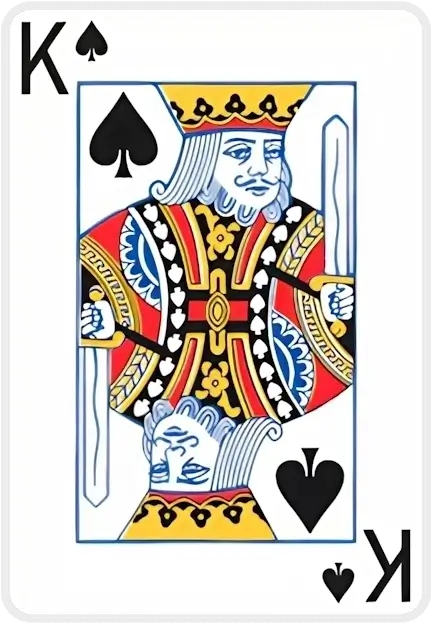Cannot drop, your card needs to be of an opposite suit colour
Cannot drop, your card needs to be one rank lower
Cannot move multiple cards to foundation
Card suit doesn't match foundation pile suit
Card can only be dropped on top of a card pile
Cannot deal cards when there are empty tableau piles
You can only move {0} card(s) at a time based on the current free cells and tableau
The cards don't add up to 13 and cannot be moved
The card is inaccessible and move cannot be performed
Cards must be in sequential order (one higher or lower)
Solitaire Turn 3

Play Solitaire Turn 3 Online for Free
Solitaire Turn 3 (often called 3-Card Draw Klondike) is a traditional Solitaire game where the stock cards are drawn in increments of three. Unlike the Turn 1 (single-card) version, three cards are flipped face-up at a time from the stock to the waste pile, making only the topmost card playable. This twist increases the challenge and encourages forward planning.
- Objective: Move all 52 cards to the four foundation piles (one for each suit), building them up in ascending order (Ace through King).
- Key Difference: In Turn 1, each card from the stock is immediately accessible. In Turn 3, you must often “cycle” through multiple sets of three cards to find what you need.
This Solitaire Turn 3 Online game provides user-friendly features such as hint, undo option, and various scoring modes to enhance the experience.
How to Play Solitaire Turn 3
-
Initial Setup
- A standard 52-card deck is shuffled.
- Seven columns (the “tableau”) are laid out left to right. Column 1 has one card face up, Column 2 has two cards (with the topmost face up), and so on up to Column 7, which has seven cards (only the topmost is face up).
- The remaining cards form the “stock,” placed face down. A waste pile is formed next to it as you flip cards from the stock.
-
Turning Over the Stock
- Flip over the top three cards from the stock onto the waste pile. Only the uppermost card of those three is available to play onto the tableau or foundation.
- If you can’t play the top card, you may flip another set of three cards onto the waste. When you exhaust the stock, you can turn the waste pile over to reset the stock (depending on the ruleset, you may have a limited or unlimited number of resets).
-
Moving Cards
- Foundations: Build each suit from Ace to King (A, 2, 3, …, Q, K). Place Aces first.
- Tableau: Build in descending order, alternating colors (e.g., place a black 7 on a red 8). If a tableau column is empty, only a King (with or without a sequence attached) can move into that space.
- You can move cards between tableau columns if they follow the descending, alternating-color sequence.
-
Winning the Game
- You win once all cards are moved to the four foundation piles in ascending suit order.
Interesting Facts About Solitaire Turn 3
-
Increased Difficulty
- Turning over three cards at a time makes the game more challenging than Turn 1. You may cycle through multiple waste piles to uncover the card you need.
-
Popularized by Computers
- Klondike Solitaire became a household name thanks to its inclusion with early Microsoft Windows. Many users eventually discovered the Turn 3 option for added complexity.
-
Scoring Variations
- Some online and offline versions incorporate “Vegas” scoring, where you start with a certain score (e.g., 0 or a negative bank) and earn points (or money) by moving cards to foundations. Each pass through the stock might incur a penalty.
-
Limited vs. Unlimited Passes
- Different rule sets allow varying numbers of times you can cycle through the stock. Unlimited games are more forgiving; limited ones demand tighter, more efficient play.
-
Global Appeal
- Though it originated in the U.S., Solitaire Turn 3 (and Klondike in general) is now played worldwide in countless languages, thanks to its simplicity and digital accessibility.
Tips and Tricks
-
Expose Hidden Cards Early
- Focus on unveiling face-down cards in the tableau. Each revealed card can offer new moves or uncover a critical Ace or low-value card for the foundations.
-
Keep Track of Waste Pile Cards
- Pay attention to which cards are buried in the sets of three. Sometimes it’s best to skip playing the top card if it means you can access a more valuable second or third card on the next pass.
-
Save the Undo Button
- If the online version offers an undo function, use it prudently to test different sequences or correct a misstep you realize is blocking future moves.
-
Clear Columns for Kings
- An empty tableau column is crucial for repositioning Kings. When possible, move or clear out an entire column to create space for a King (along with its descending sequence).
-
Foundation Placement Timing
- While you want to build up your foundations, don’t rush to move mid-range cards (like 5, 6, 7) too early. They might be more helpful in the tableau, especially for rearranging other cards.
Strategies for Winning
-
Plan Moves Around the Draw 3 Mechanic
- Since only one of the three waste cards is immediately playable, anticipate the next flips. Sometimes you’ll avoid playing the top card to expose the one behind it in the next round.
-
Prioritize Aces and Deuces
- Quickly move Aces and Twos to the foundations as they become available, creating space in the tableau and enabling you to stack the next cards (3, 4, etc.) effectively.
-
Use Empty Columns Wisely
- Freed-up tableau columns give you more flexibility to move entire sequences. Try to keep at least one column empty if possible, so you can quickly relocate a run of cards.
-
Multiple Passes Strategy
- If you have unlimited passes, consider skipping certain top waste cards on early cycles if it means you’ll get a more useful card. With limited passes, you’ll need a more cautious approach, planning the best time to flip or re-flip the stock.
-
Manage the Stock
- The stock is your lifeline to new cards. Keep track of how many times you’ve cycled through it (if it’s limited) and which cards you’ve already seen. The knowledge of your “deck memory” can guide crucial decisions in the tableau.
Solitaire Turn 3 adds an extra layer of challenge and strategy to the classic Klondike formula by revealing cards in sets of three. This variation requires careful planning around which cards to play, when to cycle the deck, and how to maintain the tableau for maximum flexibility. Whether you’re seeking a new twist on a beloved pastime or looking to sharpen your Solitaire skills, Turn 3 offers a uniquely rewarding experience.
Case Studies
All figures below come directly from our database. Using first-party data ensures every insight is evidence-based, up-to-date, and privacy-respectful.
| Game Tier | Stand-out Titles | Win Rate |
|---|---|---|
| Quick Wins | Spider (1 Suit), Hole-in-One, TriPeaks | 70–84% |
| Fair Challenges | Solitaire (Draw 1) – 913 k plays FreeCell, Golf |
45–63% |
| Expert-Level | Spider (4 Suits), Forty Thieves, Double Scorpion | ≤11% |
Curious which moves turn the odds in your favor? Explore all the data & strategies →
What people say about us
Interview with Beverley Walker-Daury
At 87, Beverley Walker-Daury shares how SolitaireX brings joy, companionship, and purpose to her days in a retirement home.
Player Interview: Poul Andersen
Poul Andersen shares how playing SolitaireX helps him keep his brain sharp and active.
Player Interview: Peter Gross
Peter Gross, 81, shares how SolitaireX became his go-to place for relaxing Freecell games and friendly competition.
Player Spotlight: St0Sh0’s Record-Breaking Runs on SolitaireX
We sit down with speed-solitaire sensation St0Sh0 to talk record times, favorite variants, and why SolitaireX is his go-to card-game hub.
Fresh from the SolitaireX Blog

Sharpen Your Mind (and Enjoy It): Solitaire, Sudoku & Mahjong for Everyday Brain Fitness
Short puzzle sessions with solitaire, sudoku, and mahjong can sharpen focus, support memory, and ease stress. These timeless games turn everyday breaks into light but powerful brain workouts.

Track Your Spider Solitaire Progress: Build Your Own Win-Rate System
This article is the final part of a Spider Solitaire mastery series, focusing on how to track your games and build a personal win-rate system. By logging key metrics, spotting patterns, and reflecting on notes, it shows how players can turn simple records into powerful insights that boost skill, confidence, and long-term enjoyment.

Spider Solitaire Strategy Deep Dive: From Mixed Runs to Clean Wins
This article is a deep-dive strategy guide for Spider Solitaire (Part 2) aimed at intermediate and advanced players. It builds on the basics from Part 1 and focuses on how to turn messy mid-game layouts into structured, winnable positions.

Solitaire Variations Glossary: Essential Terms by Gameplay Category
Explore the ultimate glossary of solitaire terms and concepts, explained in clear and simple language. From tableau, foundations, and free cells to popular solitaire variations like Klondike, Spider, FreeCell, Pyramid, and TriPeaks, this guide helps beginners and enthusiasts understand the rules, moves, and key strategies of solitaire.
Latest guides crafted by Stoyan Shopov and Kalin Nikolov
Golf Solitaire Mastery: Strategy, Stats & Flow
Deal 7 columns of 5 face‑up cards (35 total). The remaining 17 cards*form the stock; flip the first stock card to start the waste. You may move only exposed tableau cards, and only if the rank is exactly one higher or lower than the waste top. Suits don’t matter. When no move exists, flip a new waste card. Clear all tableau cards to win.
TriPeaks Solitaire Mastery: Strategy & Analytics
Two peaks are dust; one stubborn ridge remains. Your waste shows a 9. The tableau flashes 10‑J‑10‑9‑8 like a heartbeat. You nudge the 10, feel the cadence lock in, and—without overthinking—trace a neat descent that crumbles the last peak. That tiny spark of *flow* is why TriPeaks hooks serious players: rhythm, restraint, and the rush of a run that arrives exactly on time.
Pyramid Solitaire Mastery: Strategy, Stats & Joy
Picture the pyramid down to its last stubborn tier: a Queen pinned beneath a ridge, a lone Ace on the waste, and a King begging to be burned for tempo. Heartbeat, breath, click—then the whole structure yields in a rush. If you’ve hit that razor‑edge finale, you already know Pyramid’s secret: small decisions, made in the right order, change everything.
FreeCell Solitaire Mastery: Strategy & Analytics Guide
I have a 15 years personal, lived experience—picture a scene built from thousands of session logs and notes from serious players: It’s late, and the board looks jammed. You clear a single column, free one cell, and suddenly a 9♣‑8♦‑7♣‑6♦ chain glides into place, untying the knot you stared at for ten minutes. The rush isn’t luck—it’s the quiet pleasure of a plan snapping into focus. When did FreeCell last feel less like “killing time” and more like practicing a craft you can actually master?
Media About Us
Research: What Tech Do Senior Solitaire Players Use? A Data‑Rich Look
hashnode.dev
How SolitaireX.io Powers Seeded Deals and Replays Across 70 Solitaire Variations
dev.to

How: Modern Libraries with Classic Games
Browser Based Online Game Directory

SolitaireX.io has been featured on bbogd.com, where players worldwide find Browser Based Online Games
5758610566928581


